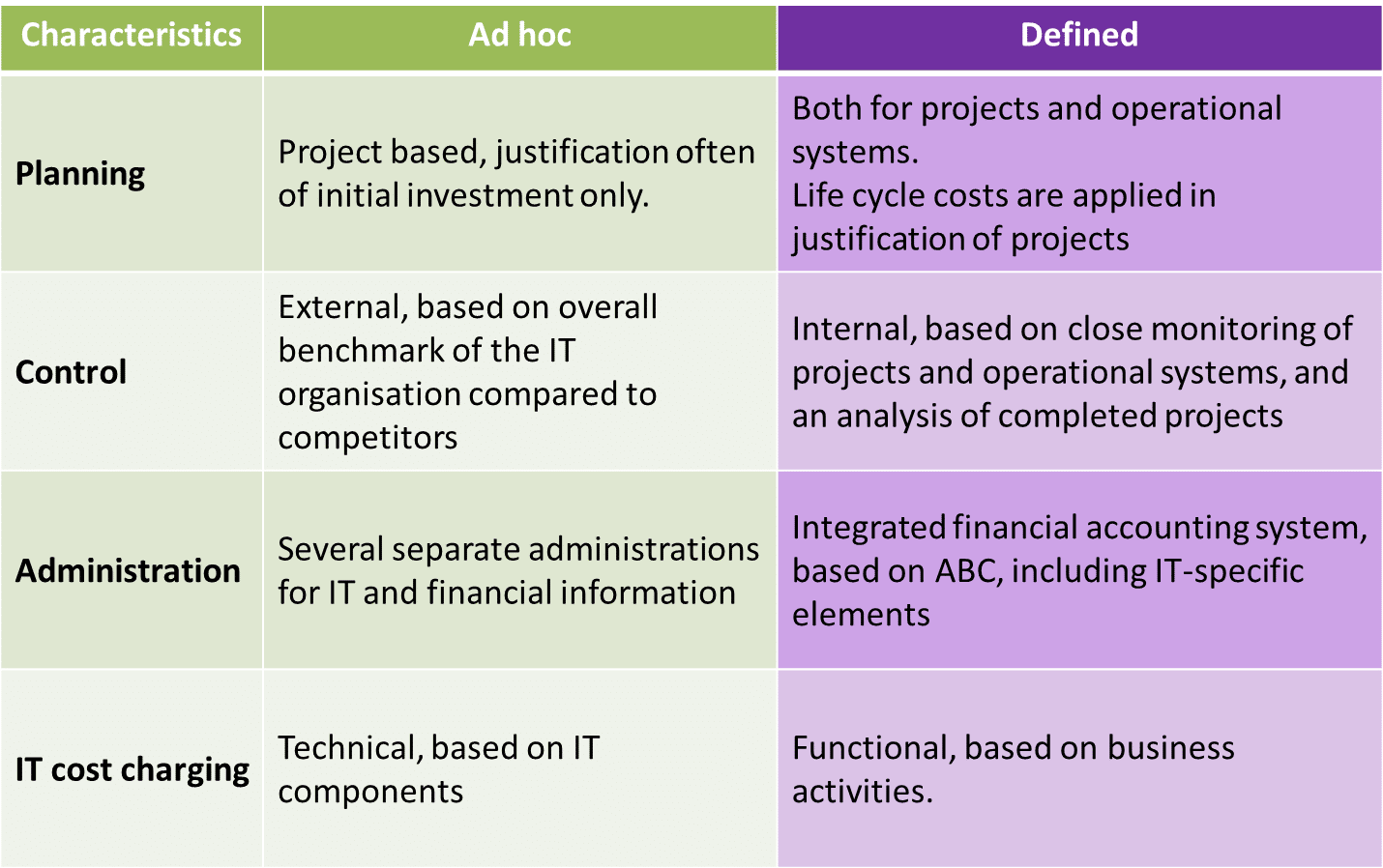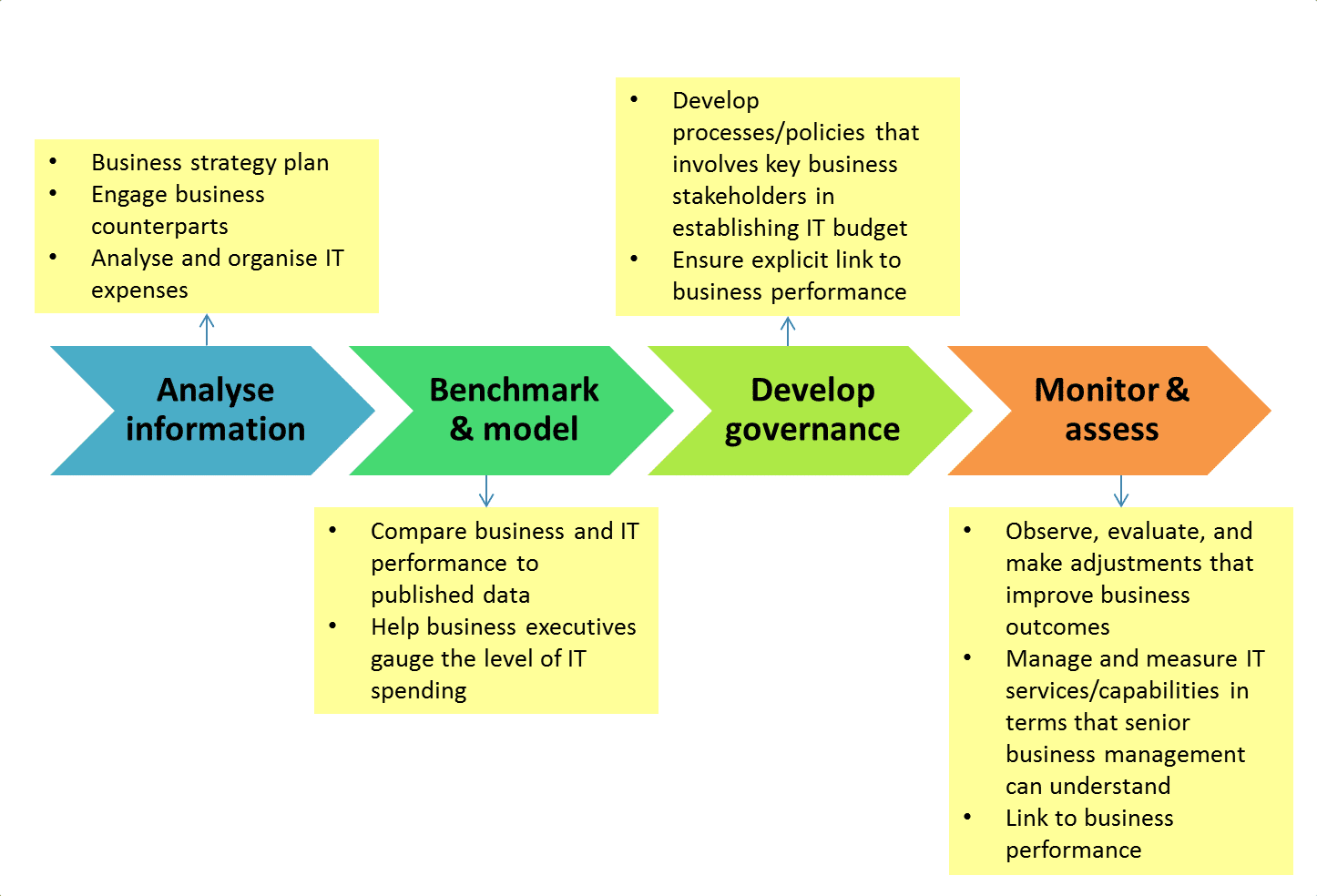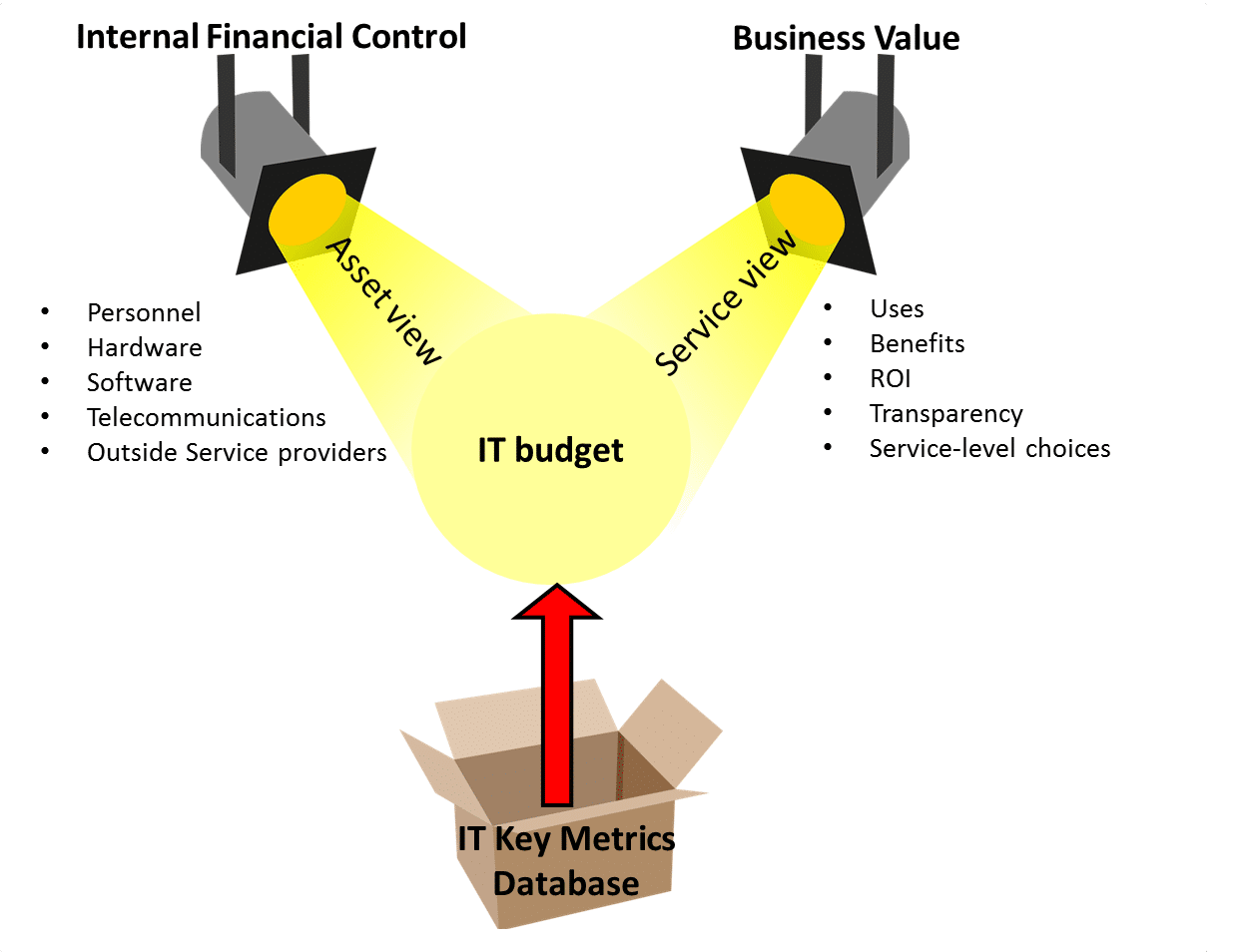IT budgeting and cost management
Budgeting within the IT industry is an integral tool used in management in order to optimise strategies implemented to better achieve the goals of the organisation. Using budgeting in this way also contributes to the alignment of business and IT sectors within an organisation by enhancing the business’s view of IT. In this lecture, the concept of the IT budgeting will be discussed from a viewpoint that considers both the financial aspect as well as the management aspect.
Understanding IT budgeting from both points of view allows the IT budget to be driven from the enterprise’s business strategy affording the opportunity to change the business’s view of IT as a cost centre to IT as a resource assisting to achieve strategic goals.
Control of spending and cost
Controlling of expenditure within the IT sector is pivotal part of IT management within an organisation. Previously defined approaches have centred primarily on theoretical, accounting-based strategies. These approaches have been criticised because:
- They do not enable the costs of IT to be related to their corresponding business processes
- They do not support other cost management activities (i.e. budgeting, controlling project costs, controlling operational systems costs, and charging etc.).
The above factors negatively impact the alignment of business and IT sectors within the organisation since they do not provide adequate cost control and, thus, do not contribute as positively as they potentially could because management does not adequately allow strategies to assist in business goal achievement.
Total Cost of Ownership models (TCO), defining the IT costs of an organisation, require IT expenditures to be considered beyond the initial investment and traditional bookkeeping. All costs of a certain IT object (facility, system or component) over the entire life cycle of this object are considered aiming to create an approach that is not generalised and that promotes business/IT alignment. TCO models allow the organisations to analyse and implement strategies that include cost management activities. These activities, and their contribution to the final goal of the organisation, are illustrated in the diagram below:

The TOC models allow a shift from traditional and initial ad hoc bookkeeping to a more defined level of cost management. The table below shows this changed based on planning, control, administration, and IT cost charging:

This shift promotes an approach that integrates business strategies with IT cost management strategies to ensure cost control that functions as a business-aligned management tool contributing to the achievement of the business’s goals. This process is further emphasised by the IT Budgeting Key Initiative.
IT Budgeting Key Initiatives
This initiative emphasises that, along with being an accounting tool for controlling how money is spent, the IT budget is also a management tool for helping business leaders understand how IT expenses contribute to business value. The development, management, and presentation of the IT budget afford opportunities for the organisation to link IT capabilities with business performance and value. Business leaders and stakeholders are involved in the budgeting process in order to ensure budget approval and provide a way of validating the IT industry as the best alternative for assisting the business sector in using information systems to improve productivity, innovate and gain competitive advantage, and achieve the business’s goals.
The image below illustrated the structured process of conducting and IT budget:

Overall, the IT Budgeting Key Initiative aims to provide IT leaders with a guide describing how to create an IT budget that functions as a management tool to assist in realising the strategic goals of its business counterpart. Below, a diagram displays the overview of the IT Budgeting Initiative and the way it contributes to achieving this aim.

Conclusion
Focus has been placed on shifting IT budgeting approaches from the traditional, ad hoc method to more defined methods involving TOC models and the IT Key Budgeting Initiative. This shift allows the IT budget to be driven from the enterprise’s business strategy affording the opportunity to change the business’s view of IT as a cost centre to IT as a resource. By doing this, alignment of the IT and business sectors is promoted, optimising cost management of IT using cost management activities and improving strategic planning with regards to achieving the business’s, and overall organisations, goals.
Resources
Most of the content of this article was based on the following journal article: van Maanen, H., & Berghout, E. (2002). Cost management of IT beyond cost of ownership models: a state of the art overview of the Dutch financial services industry. Evaluation and Program Planning, 25, 167-173.
We also brought in content from McGittigan, J. (2014). IT Budgeting Key Innitiative Overview. Gartner Research Note: G00262977.
What is next
Previous Post |
Next post |
Delivery Methodologies: DevOps and Scrum |
Negotiation |
For all our Modern IT Management Lectures.
For all our Podcasts.
